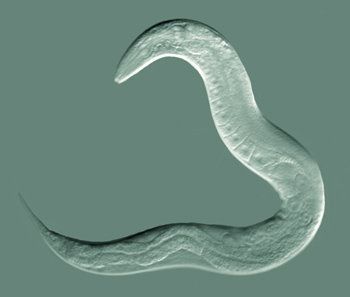Scientists Set Phasers to Stun
/https://tf-cmsv2-smithsonianmag-media.s3.amazonaws.com/filer/20110520102310CelegansGoldsteinLabUNC.jpg)

It's the stuff of science fiction: paralysis at the flip of a switch. No need to worry, though, Star Trek fans, unless you're a nematode worm (Caenorhabditis elegans) and have been consuming the chemical dithienylethene.
When a group of scientists from Canada, whose study appears in the Journal of the American Chemical Society, fed the chemical to the worms and then exposed them to a specific wavelength of ultraviolet light (365 nm), the worms turned blue and became paralyzed. Putting the worms under visible light reversed the paralysis. The chemical worked through at least three rounds of stunning.
Lead researcher Neil Branda of Simon Fraser University told the BBC News that the worms likely become paralyzed because the ultraviolet light triggers changes in the dithienylethene molecule that make it better at attracting electrons, which which may be playing havoc with the worm's metabolic pathways, causing the paralysis.
The research could help in the development of medicines that could be turned on and off in the treatment of cancer or other diseases.
"I'm not convinced there's a legitimate use of turning organisms on and off in terms of paralysis, but until somebody tells me otherwise, I'm not going to say that there isn't an application," Professor Branda told BBC News.
And now I'm wondering: what were they serving in the Enterprise mess hall?
/https://tf-cmsv2-smithsonianmag-media.s3.amazonaws.com/accounts/headshot/Sarah-Zielinski-240.jpg)
/https://tf-cmsv2-smithsonianmag-media.s3.amazonaws.com/accounts/headshot/Sarah-Zielinski-240.jpg)